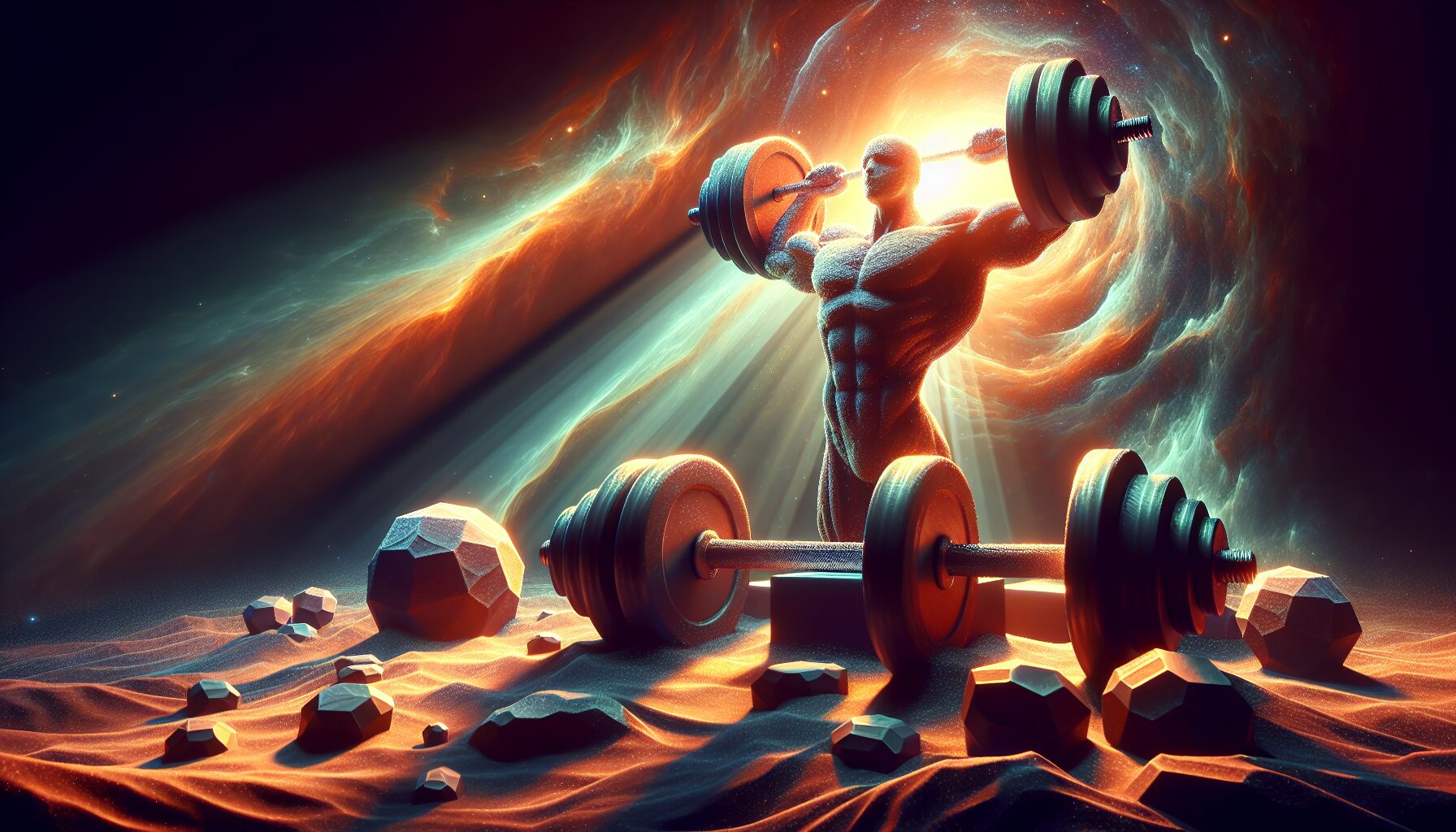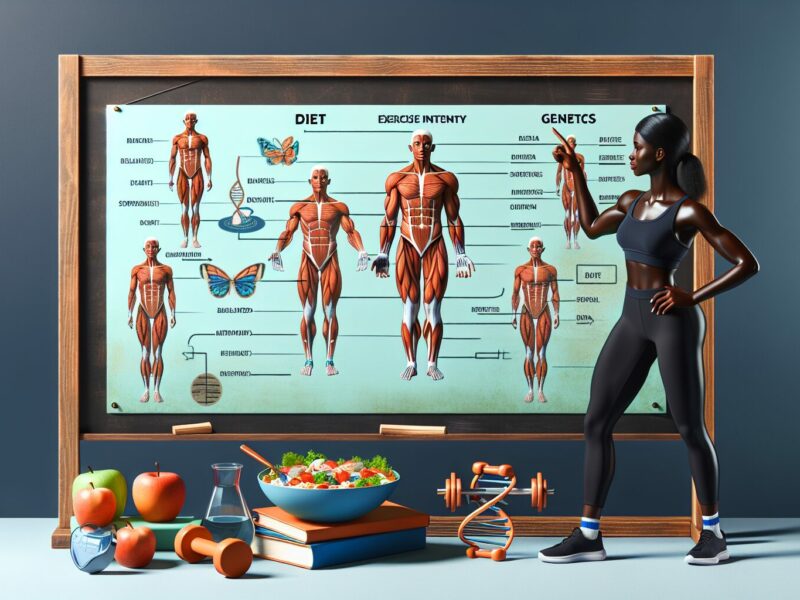Have you ever wondered how long it takes for muscles to become noticeable? Whether you’re hitting the gym or trying a new workout routine at home, the desire for visible results can be a powerful motivator. While there isn’t a one-size-fits-all answer, understanding the factors that influence muscle growth can give you a better idea of what to expect. From consistency in training and adequate nutrition to genetics and individual differences, uncovering the timeline for noticeable muscle gains is a fascinating journey.
Factors Affecting Muscle Growth
Genetics
Genetics play a significant role in determining an individual’s potential for muscle growth. Some people are naturally blessed with a genetic makeup that allows for faster and more substantial muscle development. These individuals generally have a higher number of muscle fibers and a favorable muscle shape and size. However, it is important to note that genetics do not solely determine one’s ability to build muscle. With the right training program and nutrition, anyone can achieve considerable muscle growth regardless of their genetic predisposition.
Training Program
The type and intensity of your training program greatly impact muscle growth. To stimulate muscle growth, you need to engage in resistance training exercises that target the major muscle groups. This can include exercises such as squats, deadlifts, bench presses, and various isolation exercises. The frequency and duration of your workouts are also important factors. Consistency is key, and it is generally recommended to engage in resistance training at least two to three times a week with adequate rest days in between.
Intensity of Workouts
The intensity of your workouts is crucial for muscle growth. In order to see noticeable gains, you need to challenge your muscles by progressively increasing the weight or resistance you use. This can be done by adding more weight to your lifts or performing more demanding variations of exercises. By pushing your muscles to their limits, you create micro-tears in the muscle fibers, which then heal and grow stronger during the recovery process.
Nutrition
Proper nutrition is vital for muscle growth. The food you consume provides the necessary building blocks for muscle tissue repair and growth. A well-balanced diet rich in protein, complex carbohydrates, and healthy fats is essential. Protein, in particular, plays a crucial role in muscle synthesis. Aim to consume around 1.2-2 grams of protein per kilogram of body weight to support optimal muscle growth. Additionally, staying hydrated and fueling your body with adequate nutrients before and after workouts can further promote muscle development.
Rest and Recovery
Rest and recovery are often overlooked but are absolutely essential for muscle growth. During periods of rest, your muscles have the opportunity to repair and rebuild. It is during this phase that muscle growth occurs. Make sure to allow for enough sleep and rest days between workouts to prevent overtraining. Additionally, incorporating techniques such as foam rolling and stretching can help alleviate muscle tension and improve overall recovery.

Initial Strength and Muscle Adaptations
Neural Adaptations
When you first embark on a resistance training program, your body undergoes neural adaptations. These adaptations primarily involve improved coordination, motor unit recruitment, and neural efficiency. Initially, your body becomes better at activating the necessary muscle fibers to perform specific movements. This leads to a rapid increase in strength, even before significant muscle growth occurs. So, in the early stages, you may notice an improvement in overall strength without a significant change in muscle size.
Protein Synthesis
As you continue with your training program, your body starts to adapt at a cellular level. Protein synthesis, the process by which your body builds new muscle protein, becomes crucial for muscle growth. During resistance training, your muscles experience microtears, triggering a process called muscle protein breakdown. Protein synthesis then occurs to repair and rebuild the damaged muscle fibers, resulting in muscle growth over time. By following a well-rounded nutrition plan that incorporates adequate protein intake, you support this protein synthesis process and promote muscle development.
Muscle Fiber Recruitment
Muscle fiber recruitment refers to the activation of different types of muscle fibers during exercise. Initially, your body predominantly uses the slow-twitch muscle fibers, which are responsible for endurance activities. However, as you continue to challenge your muscles with increased resistance or intensity, your body starts to recruit fast-twitch muscle fibers. These fast-twitch fibers have a greater potential for growth and strength, leading to more noticeable muscle gains over time. Therefore, regularly upping the ante in terms of exercise intensity and resistance can help stimulate muscle fiber recruitment and promote muscle growth.

Time Frame for Visible Muscle Growth
Short-term Changes
While noticeable muscle growth can take time, there are certain short-term changes that you may observe. These changes are a result of increased blood flow to the muscles during exercise, giving them a pumped and fuller appearance. This effect is temporary and typically fades within a few hours after the workout. However, it can be a satisfying visual confirmation that your muscles are being stimulated and responding to the training.
Medium-term Changes
In the medium term, typically within a few weeks to a couple of months of consistent training, you may start to see some visible muscle growth. This growth is primarily due to an increase in muscle size, often referred to as hypertrophy. Your muscles become denser and more defined, resulting in a more sculpted appearance. This period is an exciting time as the changes become more noticeable, motivating you to continue your fitness journey.
Long-term Changes
Long-term muscle growth typically occurs after several months or even years of consistent resistance training. Given the individual differences and various factors influencing muscle growth, the time frame for significant long-term changes can vary. However, with dedicated effort and a well-designed training program, you can expect to see substantial progress. Over time, your muscles will continue to grow and become more defined, contributing to a more muscular physique.

Individual Differences and Expectations
Body Composition
Individual differences in body composition can significantly impact how quickly muscle growth becomes noticeable. People with a lower body fat percentage and a higher muscle mass may observe muscle gains more readily. On the other hand, individuals with a higher body fat percentage may find it challenging to see visible muscle growth due to the layer of fat covering the muscles. Nevertheless, with consistent training and proper nutrition, muscle growth can still occur and eventually become visible.
Training Experience
Training experience also plays a role in how quickly muscles become noticeable. Beginners who have just started their fitness journey may experience “newbie gains” during the initial stages. This is because their muscles are not accustomed to resistance training, leading to quicker adaptations and visible progress. However, as you advance and gain more experience, the rate of muscle growth may slow down, requiring more strategic programming and a focus on progressive overload.
Consistency and Dedication
Consistency and dedication are key factors in achieving noticeable muscle growth. Building muscle takes time and requires a commitment to regular resistance training sessions and proper nutrition. Skipping workouts or having an inconsistent routine can impede progress and delay visible results. By staying consistent and dedicated to your training program, you maximize your chances of seeing significant muscle growth.
Age
Age can influence the rate at which muscles become noticeable. Generally, younger individuals tend to experience quicker muscle growth due to higher levels of natural hormones and a more efficient recovery process. As you age, the rate of muscle growth may gradually decline due to hormonal changes and a decrease in overall muscle mass. However, this does not mean that older individuals cannot build muscle; it may just take a bit more time and effort.

Conclusion
Achieving noticeable muscle growth requires the right combination of genetics, training program, intensity, nutrition, rest, and recovery. While genetics may play a role in determining your potential, everyone has the ability to build muscles with the proper approach. Consistency and dedication to a well-designed training program, combined with a focus on progressive overload and adequate nutrition, will yield visible results over time. Remember, muscle growth is a journey that requires patience and perseverance. Stay committed, stay consistent, and you will soon enjoy the fruits of your efforts with noticeable muscle gains.



